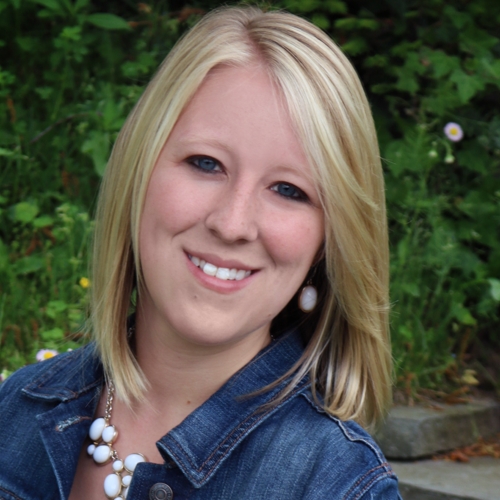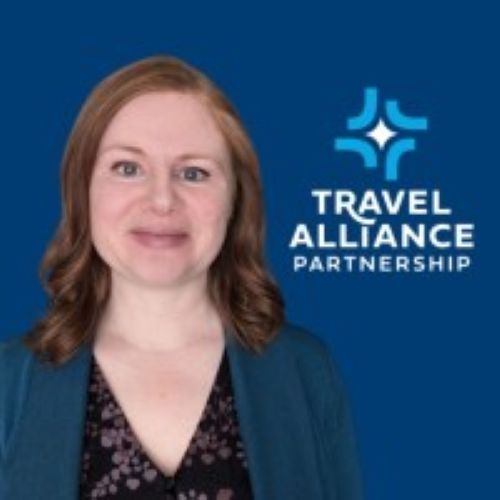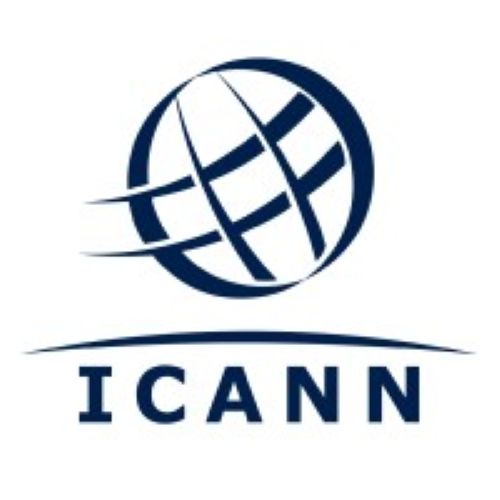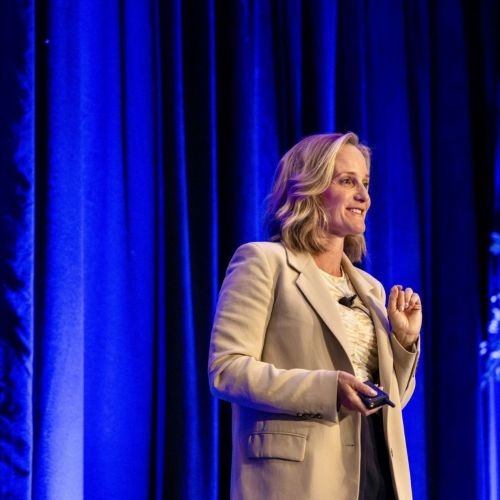Sarah Blackwell
Episode 97: The Simple Art of the Desk-Side Visit, with Sarah Blackwell
Getting influencers and travel writers to pay attention is a great way to showcase what you are offering to the travel and tourism public. Bringing them onsite and having them write about your organization can be a big public relations win. But how do you make the connection? Email and phone calls are hit-or-miss at best, if you haven’t got an established relationship already.
That’s why a tactic called the “desk-side visit” can really break the ice and get you and that writer enthused about working together. On this episode of Destination on the Left, we do a deep dive into the desk-side visit. How do you make it happen? How does it really make a difference in your organization?
Today we are talking to one of the Break The Ice Media team members in a team cast episode, Sarah Blackwell.
Sarah is a consultant and brings knowledge of the public relations industry to her work at Break The Ice, including the ability to write, pitch and tell a great story. Her experience working with journalists and a passion for PR and social media has allowed her to help her clients get great exposure and effectively connect with their target audience. Sarah is a graduate of The College at Brockport Suny with a bachelor of Science and Journalism and Broadcasting, with a concentration in PR and a dual degree in English.
She joined Break the Ice Media in 2013 and brought with her hospitality and marketing experience from internships at Disney, Southwest Airlines, American Cancer Society, and the Susan B Anthony House. Since joining Break The Ice, Sarah leads many of the travel PR clients that the agency serves, including the Haunted History Trail of New York State, Genesee County Office of Tourism, and the Canadian PR program co-op made up of 15 partners. She is very involved with the Public Relations Society of America, Rochester Chapter serving as a board member and co-chairing the PRISM Awards Committee.
More on Sarah’s Background
Thank you for joining me, Sarah.
Thanks for having me, Nicole.
I’m really looking forward to our conversation, especially since you recently returned from a trip to Toronto where you met with Canadian journalists, bloggers, and influencers in a series of desk-side meetings. I’m excited for today’s conversation, and for our listeners’ ability to learn from you today as you share your experience and best practices about desk-side visits. Are we ready to dive right in?
Yeah, let’s do it.
Awesome. Let’s start for our listener’s sake with just a little bit of perspective on exactly what is a desk-side visit?
A desk-side visit, it’s also called a media appointment, but it’s a pre-scheduled, one-on-one meeting with a writer, a blogger, an influencer, someone in your industry you want to talk with directly, with whom you’re hoping to build a relationship. A desk-side doesn’t necessarily have a time limit or any particular agenda. It can last 30 minutes, it can be an hour long, it can be as long as the conversation and your schedule allow. But really, it’s just a very casual sit-down meeting to find out what’s on that journalist or that media person’s radar and to make sure that radar includes you.
I think the key is that getting on their radar is more than just that email communication or the phone call. When you can get that face-to-face visit, it’s much more meaningful, isn’t it?
Yeah, absolutely. A phone or email pitch can also just kind of get lost in the shuffle. But a lot of times after we have a desk-side visit with someone, they start to recognize your name, they’ve had coffee with you, they’ve met you in person. That pushes your phone calls, your pitches, your outreach up to the next level.
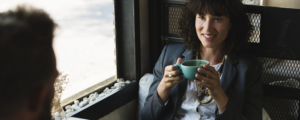
[bctt tweet=”“A phone or email pitch can also just kind of get lost in the shuffle. But a lot of times after we have a desk-side visit with someone and they’ve met you in person, that pushes your pitches to the next level.” – @SarahEBlackwell #podcast”]
Great. So if I am a listener and I’m thinking about doing some desk-side visits, how do I get started? How do I set them up?
First, you’ve got to figure out your schedule. A lot of journalists are concentrated in a particular area. A lot of them live in cities, so New York City or for me recently, like you said, it was Toronto. We planned two days of desk-sides. I would not recommend too much more than that because they do burn you out a little bit, you get tired. It’s a lot of high energy conversation. Two days is kind of the sweet spot for us.
We figure out what dates and times we are available to travel to the city. We plan for about an hour per desk-side, plus maybe 15 to 30 minutes of travel time in between.
Over two days we usually shoot for about eight to 10 desk-sides and that can a breakfast meeting, a lunch meeting, a dinner meeting. You can build your schedule however you like during the time you have available. But, once you figure out that schedule, and keeping in mind that you really don’t have that much time, you really need to target in on the top people you want to schedule a meeting with.
I usually make a target list of about 10 to 15 people. I let that act as a starting point for outreach. It’s okay to include a few more names than you have time for it because inevitably people are going to have conflicts, so you’re going to want to keep those extra names in mind. And of course in our industry, we’re working with travel writers so the big challenge is that they’re always traveling. That’s the hardest part.
But, usually I contact my top five to six people, start reaching out, and then as those appointment times book up, that’s when I start working the schedule and fitting people in where I can. I do have situations for those that can’t meet where I’ll say, “Oh, I’m sorry to hear you’ll be out of town. Let’s schedule a phone meeting for the following week.” Most of them are very open to doing that, so that’s your chance to schedule a really open, no agenda phone conversation or maybe meet at a later date if you find yourself traveling back to that city at another time.
I usually try to get my contacts a couple of weeks in advance of the trip. Usually three to four weeks is the sweet spot, but of course, I’m always reaching out till the very last minute to make sure that I’m utilizing my time well. Then just figuring out where you want to meet. I tend to suggest a coffee shop. I’m a huge coffee drinker.
I find that most journalists are big coffee drinkers. It’s a casual setting where we can sit down and have a nice conversation.The term “desk-side” is loose because a lot of people don’t have offices anymore. They don’t work at a desk, they work out of their home or they’re bloggers and they’re working out of coffee shops.
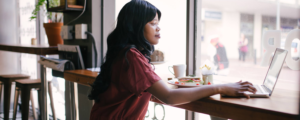
[bctt tweet=”“The term “desk-side” is loose because a lot of people don’t have offices anymore. They don’t work at a desk, they work out of their home or they’re bloggers and they’re working out of coffee shops.” – @SarahEBlackwell #podcast”]
I do try to meet people in a setting that works best for them. I really do kind of leave it up to them. Then the people who are my top, top people who I really want to have a long conversation with, those are the ones I tend to suggest grabbing lunch or dinner because conversations last longer over a meal. They’re more casual, but you tend to get into deeper conversations.
Then my last step is just to confirm with people. Before I leave, I send a quick email to confirm the appointment date, time and location. I’ll provide my cell phone number, my email and any other details that I want to share prior to the meeting just because schedules do get busy and people do forget. So, it’s always that one to two days before I leave confirmation email that makes sure that this is going to be successful.
Scheduling the Desk-Side Visit
That was a great walkthrough of the process and a really nice way to break it all down. There are a couple of things that I want to make sure listeners picked up on. I love your advice on recommending no more than two days for this, because it is such high energy kind of conversations that you’re having.
It’s important because you want to be at the top of your game. You want to be clear and fresh and a clear-minded so that you can have some really deep and meaningful conversations. Having so many appointments where you get fatigued or you really don’t have the energy level is not going to be very productive.
Exactly. That’s why I do try to keep it just to eight to ten appointments.
Yeah, I think that’s really great advice. Then, also you have your target list, your 10 to 15 people for those 8 to 10 desk-side spots. You don’t want to start with a list of 30. You’re really narrowing in on those folks that you really want to talk to you that align best with the audiences you’re trying to reach.
Right, and that’s also the chance to look at the season that you’re traveling to because every set of desk-sides I do, people want to come immediately. So, thinking about who you would want to host in that season also helps me figure out who my top 10 to 15 people are for that particular trip because I know I’m going to go back and I know I’m going to have new opportunities and desk-side appointments every time.
That’s great. This can and should be very strategic. Thinking through not only the audiences you’re trying to reach but also the seasonality I think is really great advice. And then, one of the other points that you made I want to make sure listeners caught onto is that you are spending your time doing this research, developing this target list and creating these relationships. So even if they can’t meet with you for a one-on-one in-person meeting, having that backup suggestion to schedule a phone meeting, as an alternative I think is a great way to be as productive as possible with your time.
Yes. What’s great about that is if you had just reached out to someone and said, “Hey, can we have a phone call?” I’m not sure they would be as receptive. But, the fact that you started with, “I’d love to grab a coffee. I’d love to talk this over,” and then because they can’t make the appointment following up with, “Well maybe we can talk over the phone.” That works really well for us. Actually, two of the appointments that I had in August turned into phone conversations and both of them are interested in traveling this October. So, they are really productive ways to get in front of the people you’re trying to reach.
That’s awesome. Now I have my schedule. I’ve identified my schedule, I’ve done my outreach, I’ve confirmed my appointments, what do I do to prepare for the meeting?
I try really hard not to bring too many things to a meeting. Journalists are becoming less and less paper driven. I do take some materials with me to have on hand, but I keep in the back of my mind that I’m not necessarily going to give them all out. I recommend bringing your travel guide, bringing a media kit and a map. Those are all good resources to have on hand.
Read the conversation, see if it’s the appropriate time to pull out a bunch of materials because if you just start dropping things on the table in the middle of the coffee shop, it starts to get a little intimidating. I have an iPad with photos of the destination on it. I always preload it based on the season and based on some of the top new attractions, culinary dishes or some of the top things I want to talk about.
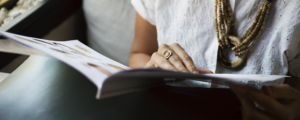
[bctt tweet=”“Read the conversation, see if it’s the appropriate time to pull out a bunch of materials because if you just start dropping things on the table in the middle of the coffee shop, it starts to get a little intimidating.” – @SarahEBlackwell #podcast”]
Again, I don’t pull this out every single time, but it is nice to have on hand, especially if you start working with influencers because they are so photo-driven. To get to see some shots and then have their wheels turning about what they think they could be doing in that particular location and seeing that translate to their Instagram feed, that’s really valuable.
If there is something that I really, really want them to take with them, I keep it really simple and straightforward. Sometimes I’ll do a printout of the top attractions, deals, or packages or some things that are coming down the road. But you know, things like your website, your image gallery and top stops, those can all be sent along later when you follow up via email.
This is not the time for a huge pitch because that I find turns people off. It’s really more of a back and forth. What are you looking for? Well, here are some of the things that we have. Oh, you mentioned you really like waterfalls, well fun fact, we have 19 waterfalls in Watkins Glen State Park. Then they might ask for the photo. Again, I will do research on who they are, what they write about. I’ll have some top things that I want to mention in mind for each of these people, but the actual materials, I keep it real simple, and a lot of that comes in the follow-up.
I like your point about the photos for the influencers in particular. What I like about that is not just that it gets their wheels turning. But the point is that you are thinking that whole thing all the way through before you get to the meeting. I think that is really great advice.
We’ve talked a little bit about what we bring to the meeting. You actually gave us some really good pointers on a little bit of the conversation. But I’m wondering, is it awkward to meet somebody face-to-face? How does that interaction go? What do you say when meeting someone for the first time?
Most of these people I’ve never met before, ever. I’m familiar with them, I’m familiar with their feeds. I feel like I know them because I’m following their blogs and their travels so closely. I do try to introduce myself right up front. I usually start with their coffee order if we’re in a coffee shop. I will treat them because they’ve come out to meet me. Then, I usually start with mentioning something like, “Oh, I saw you were just in Belize. Tell me a little bit about that.”
They might say, “Oh, well I went wine tasting,” and I’ll say, “Oh, fantastic. Well, did you know that we actually have 150 wineries in the Finger Lakes?” That’s kind of how you start the conversation. Keep it simple. These are travel writers, so I start with talking about travel. Sometimes I talk about my own travel. It sort of breaks the barriers down and gets us into more of a natural flow.
From there, you find that things just come up naturally after that. You don’t have to worry too much about your pitch because it’s going to come up. You’re going to be able to find a way because in the end, you’re excited about your destination, they have a level of excitement about your destination because they wouldn’t have agreed to meet with you if they didn’t. The job is just letting that passion shine through, and piquing their interest and enticing them to keep the conversation going after the meeting has ended. That is your end goal there, so they will eventually respond to your emails, your pitches, and know you as a familiar relationship in this industry.
Desk-Side ROI
Great. If you frame it up that way, it’s just a casual conversation, I would imagine that really takes away some of that awkwardness or some of that anxiety that someone might have when they’re meeting somebody for the first time. I think that’s a great way to think about it. Then after the meetings are over, I’m back home in my office, what are the things I should be working on next?
This is actually where all your hard work falls into place. After you’ve discussed a fam trip or a certain angle, stories or locations, this is when you get to email them and send your website link, your photos, some of those additional details that maybe you couldn’t recall off the top of your head. A question that they had that you couldn’t answer. This is where you get to invite them on a fam if that’s what you discussed or follow-up on that story.
I usually provide a media hosting forum and start to discuss dates for a fam. I include photos and links. Sometimes I’ll include a digital travel guide if I think that’s relevant. I might get back and realize, oh, I forgot to mention this really cool new stop or this thing that’s totally within their beats or their coverage, that’s my chance to answer it, to send that along.
Usually, I try to send an email as soon as 24 hours after the meeting. No later than two to three weeks after because if you wait too long, you do run the risk of their schedule filling up or them forgetting the exchange that you had. Then it really goes organically from there. I’ve had writers who were so excited that they will email me 25 minutes after our meeting, I might be already in another meeting and I’ve gotten their emails saying, “This is so great. Let’s do it, I’m excited.” So yeah, the follow up is really where all your hard work comes to fruition. You get to build that relationship into something tangible.
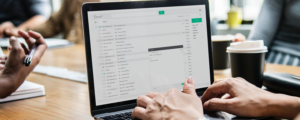
[bctt tweet=”“After my desk-sides, I try to send an email as soon as 24 hours after the meeting. No later than two to three weeks after because if you wait too long, you do run the risk of their schedule filling up.” -@SarahEBlackwell #podcast”]
That’s awesome. I’m wondering Sarah, if you can give us a specific example from one of the desk-sides that you’ve done, the conversation you had. You don’t necessarily have to tell us the name of the reporter, but I’m wondering if you can share with our listeners an example of something that you’re working on and one of those fam tours that you’re planning right now.
Yeah, actually I’m very excited about it. All of my desk-sides in August nailed it. They were fantastic. Every single person I met with was so receptive to what we were talking about. They all had ideas of their own. Some of them came in with actual story titles in mind. One of the ones I’m really excited about, it’s a new magazine that just started in Toronto. It’s a completely Toronto-based audience, which is exactly our focus.
They are food writers, so they’re going to be traveling to upstate New York actually in the next two weeks. I’m in the middle of scheduling their fam trip now. They’ll be visiting some of the top culinary spots in the area. It’s actually kind of a bonus, a two-for-one, because not only are they going to take all these ideas back and write, they have a planned placement in their November issue, but then they also said that they’re looking for content for next spring for their travel-based magazine.
It’s a food-based magazine and a travel-based magazine. They are looking for content for both, and we are hosting their food editor and bringing her in to experience some of the top stops, working in those top attractions along the way. I’m really excited about it.
I met with the Editor-in-Chief of both publications. He went back to his content team, mapped out a roadmap of content and between the two of us, we figured out who the best fit for the trip would be, where to send them and how to build that around their schedule.
That’s awesome. I just find that it’s really helpful for listeners to hear those real examples. I like how you described how this content can go beyond just one placement. You never know where it’s going to lead to. And also, how the contact that you’re meeting with might not necessarily be that person that you ended up working with in the end, but how these relationships really just build off of each other.
Right, and now I know three people who work at that magazine. It’s a total bonus because if one leaves or moves to a different publication or a different city as happens all the time and the travel industry, I have a long-standing relationship now that I’m building with other people at that publication, so it’s not like if someone leaves, I’ve lost my ability to talk to them. That’s what’s really exciting to me.
Yeah, that’s a great point. Well, Sarah, this has been a great conversation. I knew you would have a lot of insight to share with our listeners. I’m sure they learned a lot. Do you have any final thoughts before we say goodbye?
My final thought is just to let the conversation lead where it’s going and not to push too hard. That is the number one thing I’ve learned when doing desk-sides. Just be casual and remember that you have that chance in the follow up to really push the pitch.
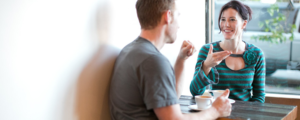
[bctt tweet=”“My final thought is just to let the conversation lead where it’s going and not to push too hard. That is the number one thing I’ve learned when doing desk-sides.” – @SarahEBlackwell #podcast”]
That’s great advice. Well, thank you so much and we’ll look forward to talking with you again.
Thank you.
We value your thoughts and feedback and would love to hear from you. Leave us a review on your favorite streaming platform to let us know what you want to hear more of. Here is a quick tutorial on how to leave us a rating and review on iTunes!
